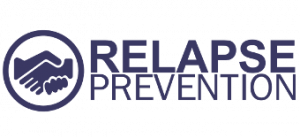
A team led by Case Western Reserve researchers has identified a potentially powerful approach to lowering relapse rates among the ranks of those addicted to illegal drugs or alcohol.
In a study of nearly 200 teenagers admitted to a residential treatment center in the northeastern United States, psychiatry professor Maria Pagano, PhD, confirmed both the prevalence of social anxiety issues among them as well as the benefits of measures designed to alleviate social distress. These findings were posted online this month in the journal Alcoholism: Clinical and Experimental Research.
“Drinking and drug use relieved a pervasive sense of not fitting in for many youths addicted to alcohol and illicit drugs, and hypersensitivity to criticism is common,” said lead author Pagano, Associate Professor of Psychiatry, Case Western Reserve University School of Medicine. “The incidence of higher rates of heroin use among young adults living in this region is distressing. A sense of belonging is important to live sober and to thrive, and 12-step service offers a venue for those impaired by social anxiety.”
Along with colleagues at Case Western Reserve, Baylor University and the University of Akron, Pagano examined the participation of youths in Alcoholics Anonymous service activities, such as setting up chairs or making coffee, as a way to facilitate the youths transition back into the community following treatment and a sober peer group. Service participation during treatment was higher among youths with social anxiety and cut the risk of relapse and incarceration approximately in half in the six months post-treatment. Forty-three percent of youths with social anxiety were high helpers during treatment, compared to 30 percent of youths without social anxiety.
Pagano and her colleagues noted that most formal treatment modalities are delivered in groups that can trigger the fear of negative peer appraisal among those with social anxiety. That’s where service activities can be particularly useful for those with social anxiety. Service activities allow for conversations to occur naturally, do not involve speaking in front of others, and allow youths to contribute and benefit from the 12-step program.
Youths with social anxiety who did not get active in service during treatment had the greatest risk of relapse, whereas high helpers with or without social anxiety were less likely to relapse and be incarcerated post-treatment.
“Low-intensity service is a more gentle way for youths to feel like they belong and to connect with other people who are facing similar challenges,” Pagano said. “Getting active in helping others through AA motivates them to stay long enough to benefit from other AA activities and increase their chances of turning their life around toward a positive life trajectory.”
Engaging with a caring network of people encourages ongoing attendance at AA meetings, particularly during the high-risk six months after treatment when 60 to 90 percent relapse and AA meeting attendance dramatically declines.
Pagano also recommended a full diagnostic evaluation of youths entering addiction treatment who appear to be socially anxious. These evaluations may lead to a definitive diagnosis of social anxiety disorder and an opportunity to treat affected adolescents with medication.
The inspiration for this investigation came from Pagano’s observation in her earlier work with adults and adolescents suffering addiction where a commonly described ailment is feeling like a social misfit. The closest condition she could find to the feeling of not belonging was social anxiety disorder. In future research, Pagano plans to assess and quantify the feeling of not fitting in — a social misfit syndrome, of sorts — and how that relates to substance addiction.
“Social anxiety disorder is the most common anxiety disorder among individuals with addiction,” Pagano said. “I believe the feeling of being a social misfit is lurking behind social anxiety and is common among those suffering with the disease of addiction.”

